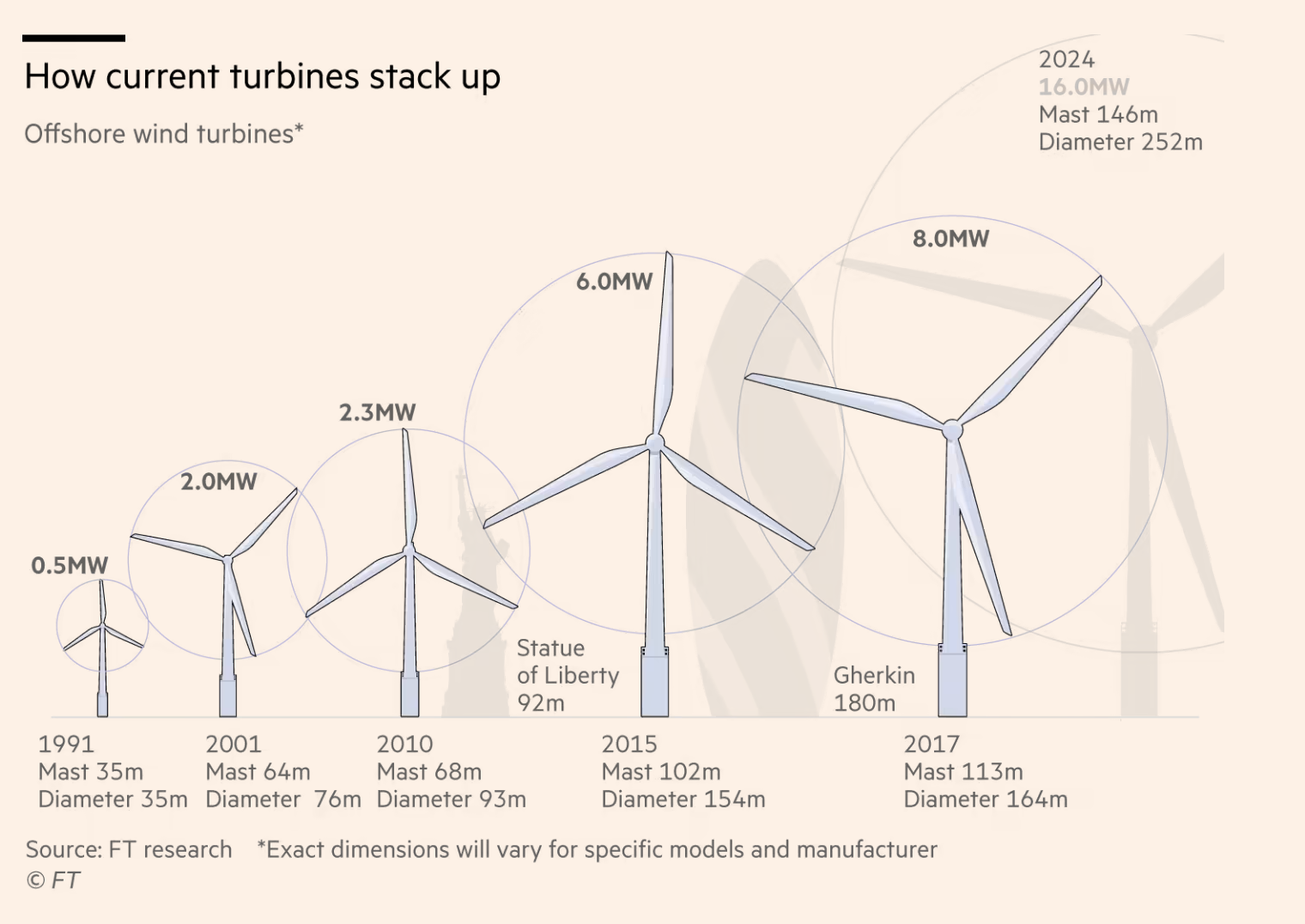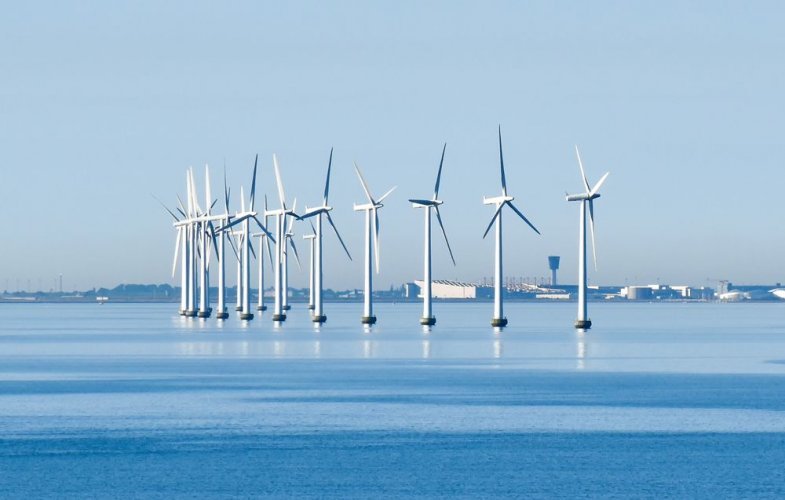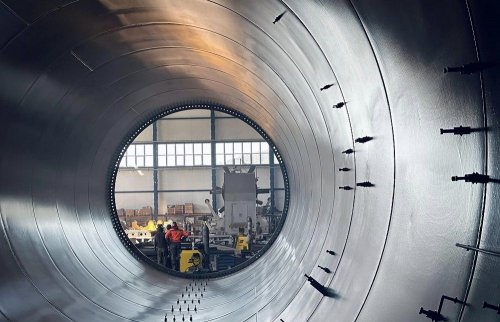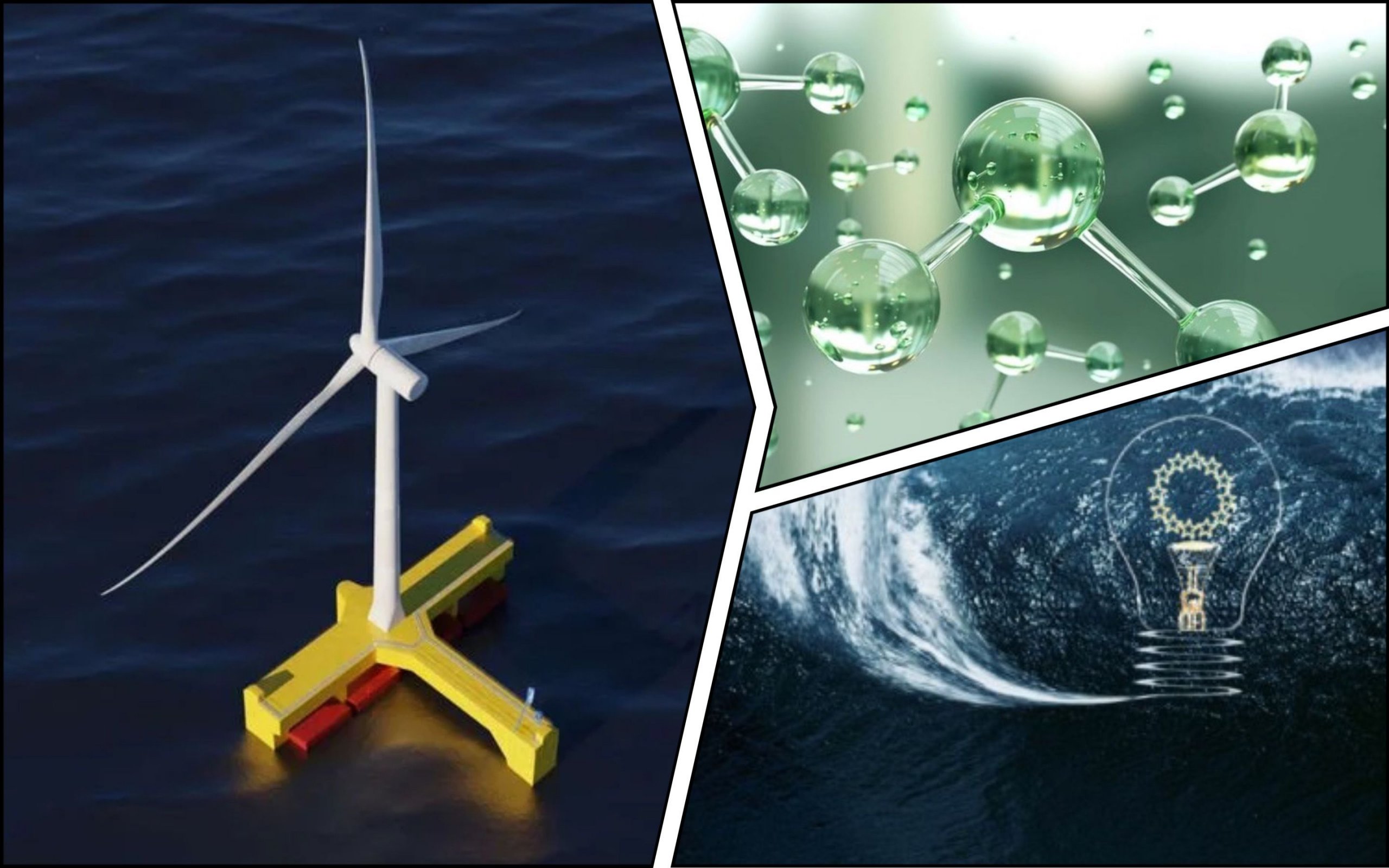The diameter of wind turbines has increased exponentially over the past 30 years, from 35 meters in 1991 to an expected 252 meters in 2024.
Some industry experts call for the standardization of turbines, because whiter equipment requires rapid infrastructure development, including more powerful ships, cranes, etc., reports FT.
There is a so-called technology race in the industry. If one of the companies produces a larger wind generator, the rest are forced to develop similar models. The race for size among Chinese manufacturers is increasing competitive pressure.
The article emphasized that the jump in the size of offshore wind turbines allowed to reduce costs and proved that the industry can play an important role in decarbonizing the energy system.
According to the International Renewable Energy Agency, generating more electricity from each turbine helped reduce wind energy costs by 60% over the decade to 2021.
However, critics fear that the race may now do more harm than good. After all, supply chains are trying to catch up.
A report by consultants Wood Mackenzie found that around half of the world's installation vessels are set to be decommissioned because they are not designed to handle the new turbine models. About $13 billion of investment is required for the replacement.
Many industry leaders are calling for an end to the era of large turbines and for standardization of models.

The article emphasized that in the early 1990s, wind turbines were less than 1 MW, and now turbines with a capacity of 18 MW or more are being developed, with blades longer than football fields on towers 100 meters high.
"I don't know of any other industry that is moving at this pace to bring new models to market before there is real experience of service at previous levels," said Professor Simon Hogg of Durham University. "This has created a big risk for the industry." .
The renewable energy insurance company GCube said that problems with the operation of machines with a capacity of more than 8 MW are reported more often.
It is noted that over the past few years, turbine manufacturers have suffered significant losses as they try to release new models and keep prices low. In addition, companies are under pressure from inflation. Thus, the Swedish developer Vattenfall stopped a new project in the North Sea in July, and Iberdrola and Shell are also withdrawing from deals in the USA.
Earlier, EcoPolitic wrote, that the blades of giant wind turbines can become even larger, which will probably reduce costs for offshore and desert projects. Currently, the Chinese company Ming Yang Smart Energy Group already offers equipment with a blade length of 140 meters.
As EcoPolitic previously reported, three wind energy companies refused to impleme
nt their large offshore projects due to a significant increase in the costs of their implementation.





